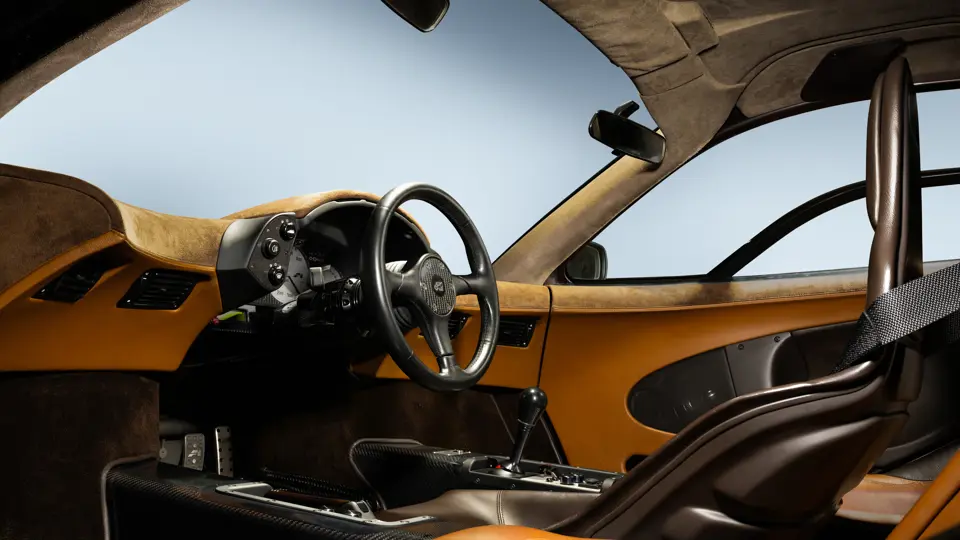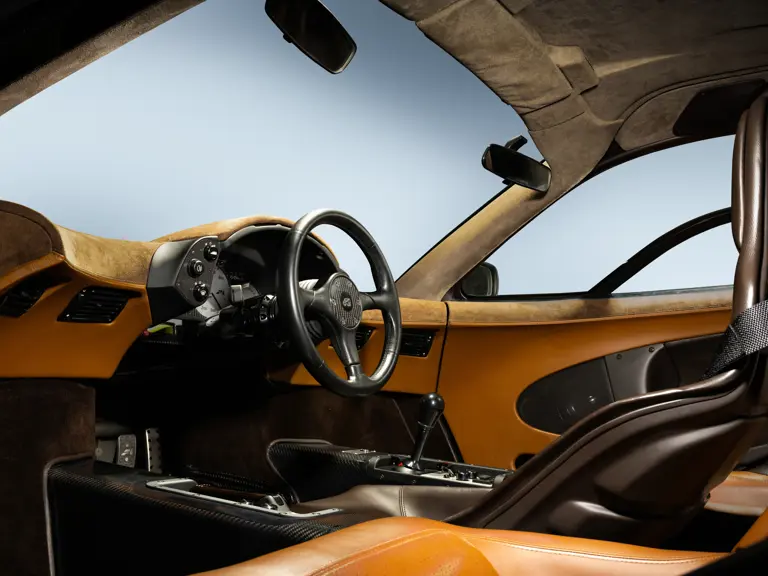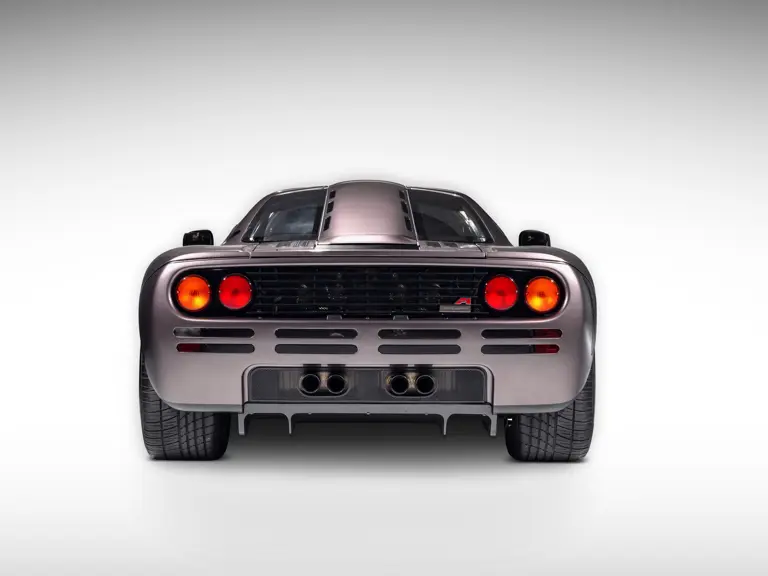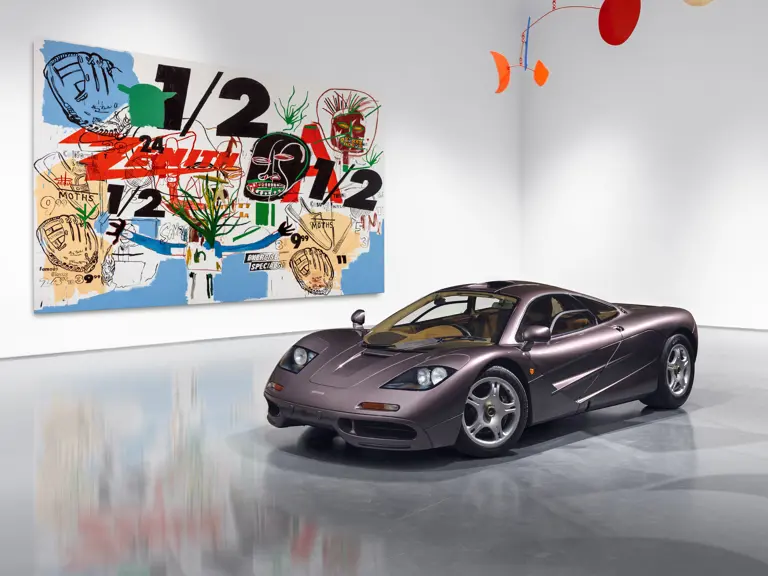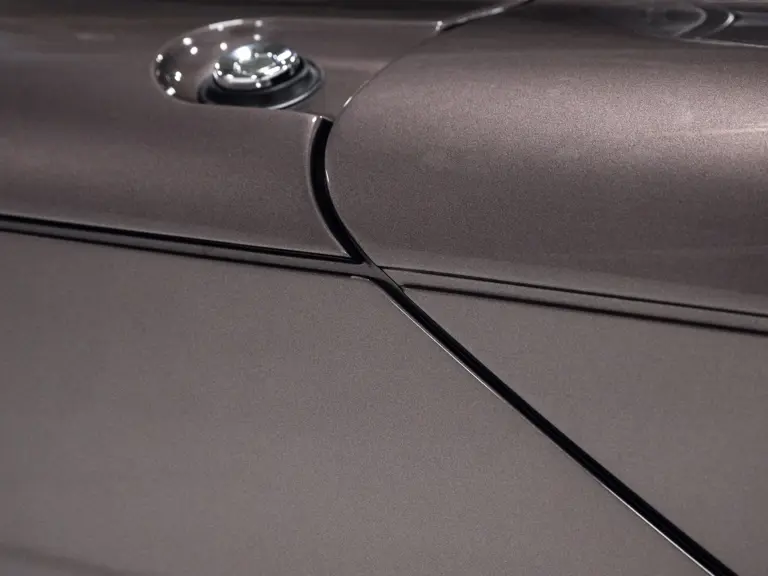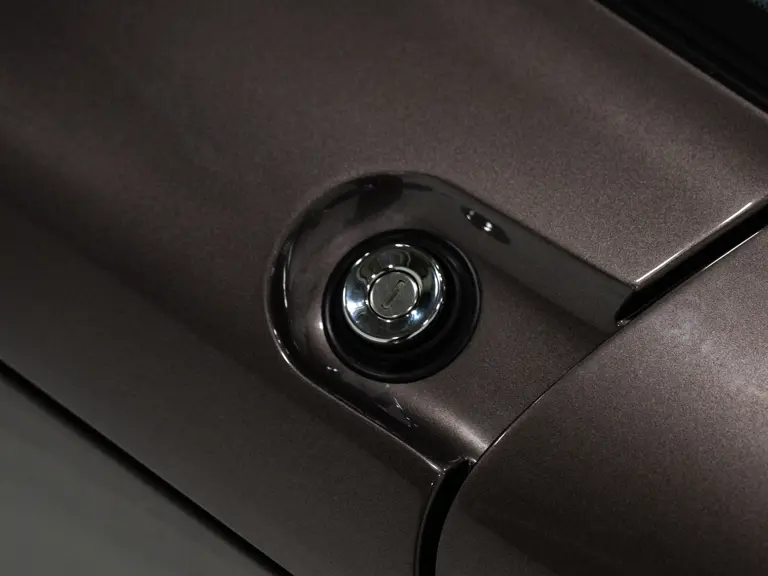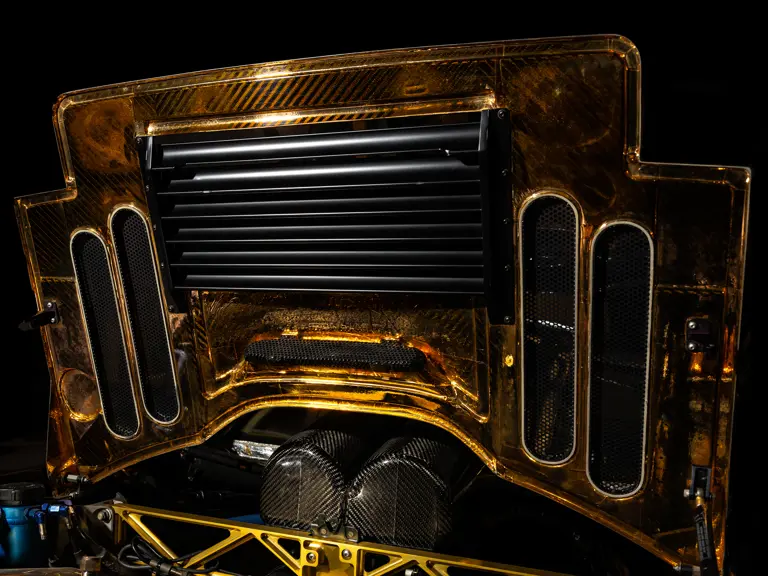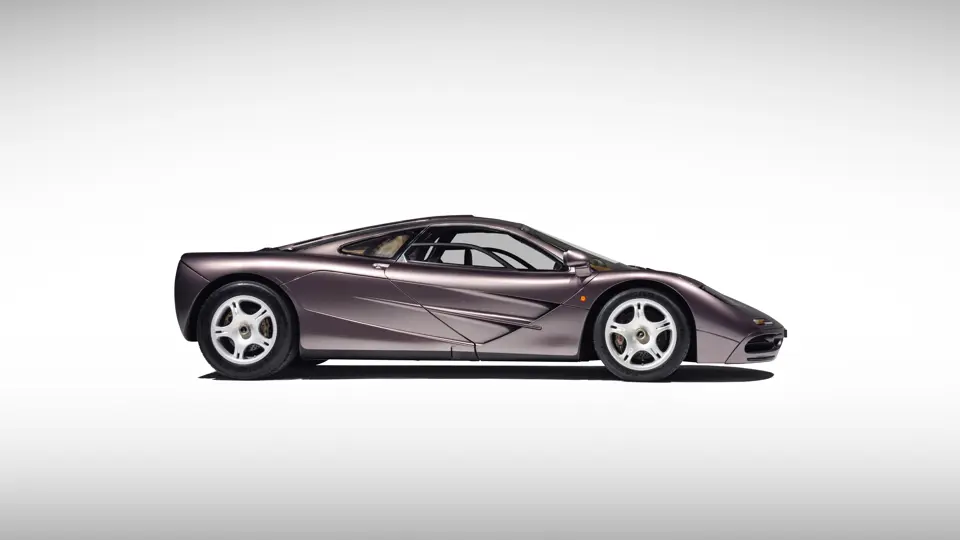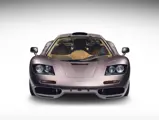
1995 McLaren F1
{{lr.item.text}}
{{bidding.lot.reserveStatusFormatted}}
- One of the lowest mileage McLaren F1s known; just 410 km (254.7 mi) from new
- The only of its type to be finished in Creighton Brown over Light Tan and Brazilian Brown
- First delivered to Japan with an unbroken chain of provenance from new
- Complete with fitted luggage, FACOM tool chest, tool roll, and TAG Heuer watch
DEUS EX MACHINA
Nothing would ever be the same again. When it arrived in 1992, the car emerged from McLaren’s Woking works like a visitor from another planet, a blinding vision that was both futuristic and timeless. The automotive landscape was changed in an instant, and the benchmark by which all other performance cars would be measured was set forever. Such was the brilliance of Gordon Murray’s creation that it would remain the fastest naturally aspirated production car ever built, and rank alongside a vanishingly small cohort of machines to transcend the automotive sphere and be considered among the greatest industrial designs of all time. For most, the McLaren F1 is the most technologically brilliant and accomplished car ever produced; for many, it is nothing short of a work of art.
The technical specifications of Murray’s creation are dizzying, a complex forest of lightweight alloys, carbon fibre-reinforced polymers, magnesium, and gold. Comprised of the most advanced materials and technologies known to man, the McLaren F1 somehow still managed to become greater than the sum of its parts, and it remains the most desirable and accomplished automobile of the modern era. Five years after its creation, Andy Wallace used a prototype, XP5, to achieve a speed of 240 mph at Ehra-Lessien. To this day, no production car has gone quicker without the help of forced induction. Adding to this accolade is its success in motorsport. Even though the car was designed explicitly for road use and never intended for racing, McLaren eventually did build a handful of race cars, dubbed the F1 GTR. Famously, in 1995, the F1 GTR’s first year of racing and the car’s first year competing at the 24 Hours of Le Mans, McLaren F1s finished in 1st, 3rd, 4th, 5th, and 13th places overall at Le Mans, a truly astonishing achievement that will never be repeated by a roadgoing automobile.
At launch in 1992, the McLaren F1 became the most expensive production car ever sold, at an eye-watering $815,000. Since then, its star has continued to rise, its value increasing 20-fold over the intervening years. Demand for the mere 64 production examples has been relentless, with its meteoric rise in value more comparable with a fine work of art than an automobile. To paraphrase Warren Buffett: “Time is the friend of the wonderful, and the enemy of the mediocre.” However, it speaks to the significance of the McLaren F1 and its engineering brilliance that the list of the model’s notable owners doesn’t merely feature investors, but some of the greatest drivers and most respected collectors, from seven-time Formula 1 Drivers’ World Champion Lewis Hamilton to Ralph Lauren, Nick Mason, Jay Leno, and the Royal Family of Brunei. Speaking to the brilliance of these cars yet again, some of these lucky individuals own more than one. Leno himself has even commented that he believes the F1 to be the greatest car of the 20th century.
“The F1 is as remarkable today as a relic of a time long past, a historical artefact no less, as it ever was as the game-changing supercar from all those years ago.” — Andrew Frankel, Autocar
Chassis 029 is absolutely unique among all McLaren F1s for its one-off paintwork and Light Tan and Brazilian Brown leather and Alcantara interior. While Papaya Orange may be the iconic McLaren colour, this example’s particular shade will be forever associated with the manufacturer, being named for McLaren Cars Ltd co-founder, Creighton Brown. No other McLaren F1 was graced with the same colour, and it marks chassis 029 as a special jewel among the limited run of road cars to leave the Woking works.
This one-off example is further differentiated from its peers by having been driven for less than 400 kilometres in the past three decades. Only a handful of McLaren F1s boast comparably low mileage, none of which have ever been offered publicly. The chances of a McLaren F1 with fewer miles or more complete provenance coming to market soon remain incalculably small.
Chassis 029 owes its unique specification and factory-fresh condition to its original owner, who was based in Japan. Factory records show that the car was just the 25th to be built by McLaren and the final example to be produced in 1994, having been completed by the factory on 23 December. It was made even more special by the addition of fitted luggage and a tool roll trimmed in the same Light Tan leather as the interior—pieces entirely unique to chassis 029. The car remained in Japan for much of its life, eventually travelling to the United States in 2013, where it was federalised for road use by JK Technologies. Despite being fully road compliant, the car was not driven and its remarkable level of preservation was maintained. It was acquired by the current consignor, and just its third private owner, in 2021.
Today, chassis 029 presents in time-warp, showroom condition. It is among the lowest mileage and best-preserved examples of what is widely regarded as the best supercar ever made and boasts a jaw-dropping, one-off specification that makes it utterly unique. The McLaren F1 is for many the pinnacle of automotive design—a sublime fusion of engineering and art that remains without equal—and of the tantalisingly few machines built, chassis 029 ranks among the very best.


